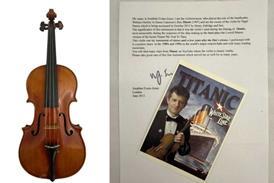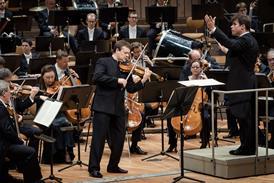It's in everyone's interests for string teachers to be generous about each other rather than arguing over whose method is best, argues Laurie Niles

The life of a musician has never been easy, and these days the life of a music teacher can be particularly difficult. Many schools have cut their music programmes, making parents and children less aware of instrumental music as a discipline. From toddlerhood, children can now make music at the touch of a button, so why learn an instrument? Society itself seems stacked against music education.
But we can’t blame everything on society. We also need to look within ourselves to see the origins of our problems – as well as a way to get past them.
Where do we find students? Where do we find music lovers? We don’t just snatch them up – we cultivate them. Different people will be attracted to different genres of music, and they will learn in very individual ways and need different approaches. But sometimes we are too busy attacking other musicians, genres, and teachers, instead of cultivating students and music lovers.
I know of one teacher who routinely bad-mouths every other violin teacher in town – telling parents and even students themselves, ‘Your teacher is teaching you wrong. You should study with me – I can teach you right.’ This certainly plays into their fears. Everyone knows: in order to become a fine player, you must invest heavily in time and effort, and in the strong belief that both will culminate in mastery of the instrument. No student wants to do it wrong and spend ten years working for nothing. In fact, students and their parents frequently fear that they are doing just that. Progress is slow – will Junior ever actually sound good? Will all this effort just be a big waste of time and money?
Nine times out of ten, when a student switches tutors out of this kind of fear, the second teacher has exactly the same issues as the first. The student still has faulty intonation, a shaky bow hand, or whatever the problem was, long after starting with the new teacher who would teach him right.
Then there is the wholesale dismissal of entire methods of teaching. No doubt all systems have their merits and their bugs. Should we fight to the death? What exactly would we be killing?
I’ll tell you what we are killing when we ask students to join in these arguments: we are killing our own art, little by little. Turning people off. Discouraging people. Feeding that fear of doing it wrong or of embracing the wrong kind of music. Why join such a negative and self-defeating effort?
One summer, I watched the British violin teacher Helen Brunner work her magic on a young student who was at a week-long institute. ‘What wonderful posture you have – your teacher at home has done a fantastic job!’ she said. The student smiled and relaxed. ‘Now, what if you held your arm a little higher, just for this passage?’ The student’s trust remained intact, yet she tried something new. She ventured one more step towards mastery, without anyone having to break the integrity of what she already had learnt well.
When I was a student at Indiana University, I marvelled at the collegial spirit among the violin faculty, in which one teacher might send a student to a colleague down the hall for the semester ‘because this professor is so good at fixing bow arms’, or to another teacher who specialised in Bach. The result? Students were free to explore their technique and musicality from a number of different perspectives, and they did not have to guard against the jealousy of their private teacher in doing so.
We serve ourselves and our art better by being open to good ideas, by acknowledging strengths in our colleagues, and by creating an environment where students can explore without fear. We teach better when we let go of our own fear of methods – and people – different from our own. The more tools we cultivate for teaching, the better. When we applaud our colleagues’ strengths, embrace each other’s best ideas and open up various paths to mastery, we reach more people. And we need to reach people more than ever, in as many ways as we can.
This article was first published in the June 2013 issue of The Strad.



































No comments yet